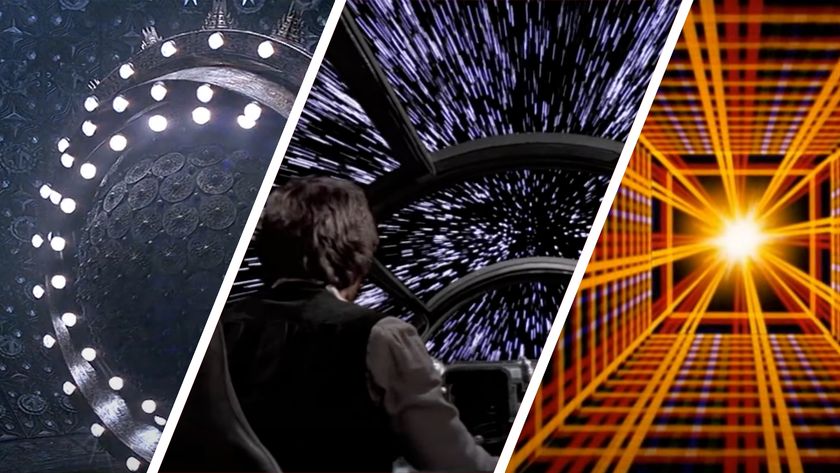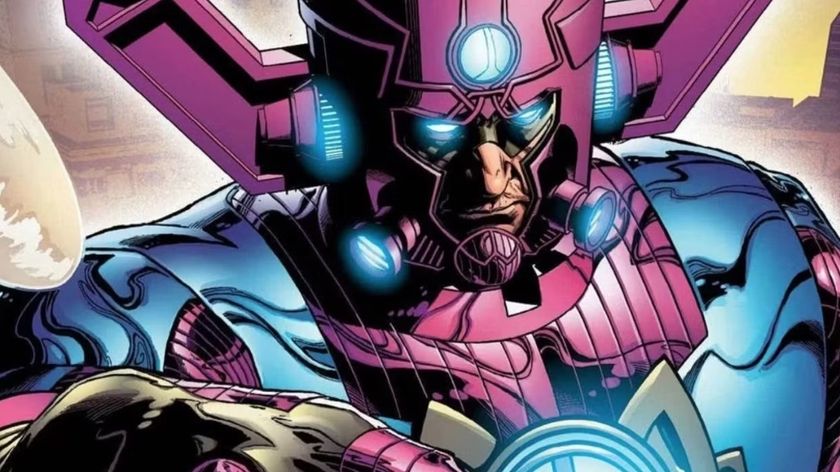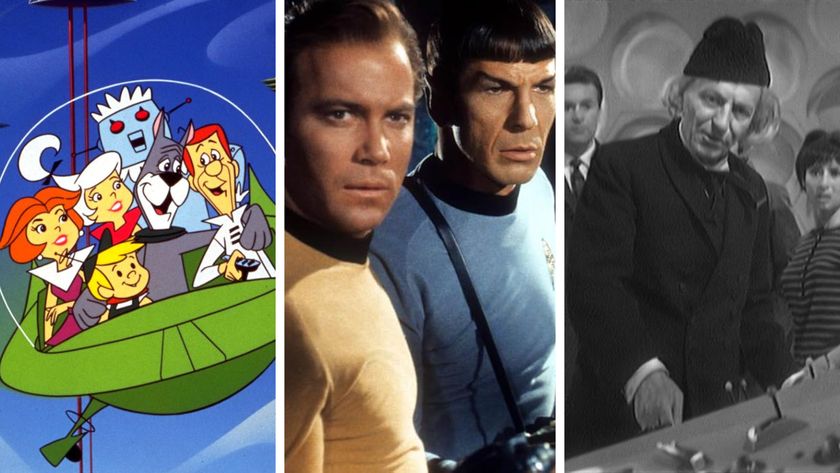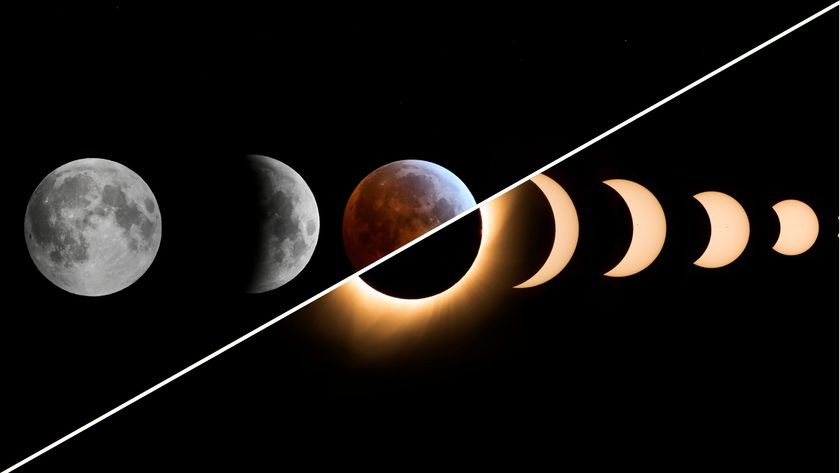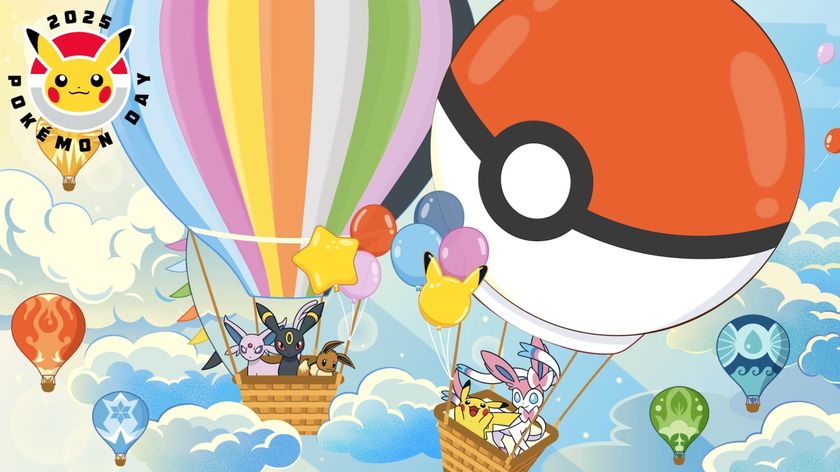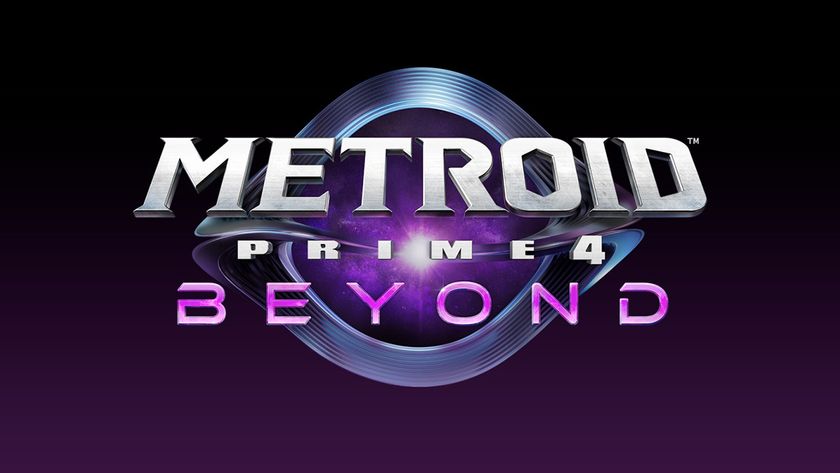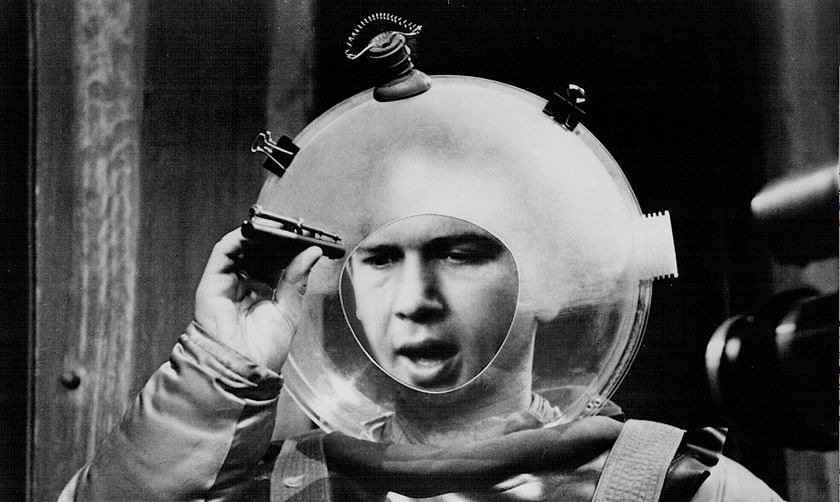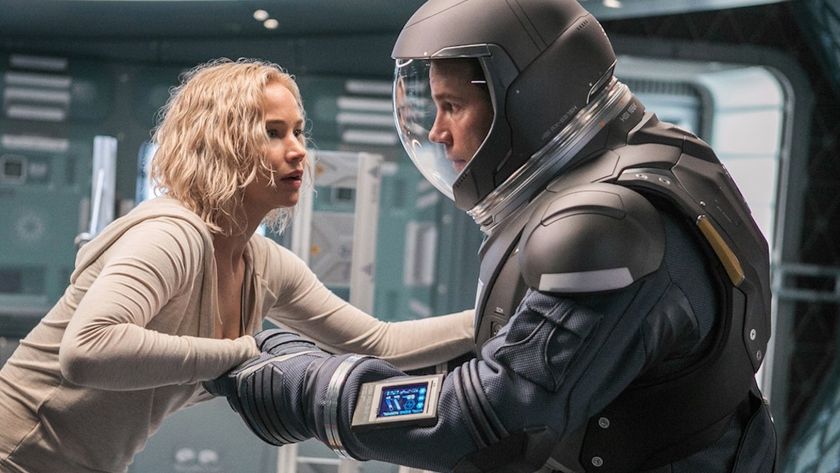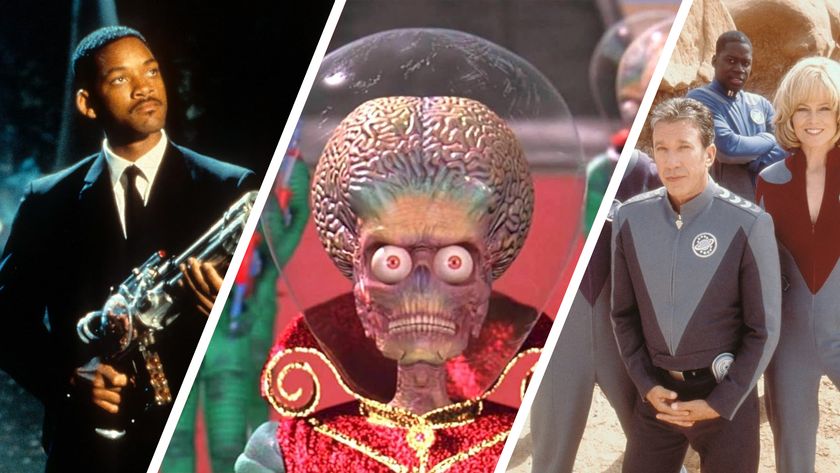The greatest asteroid missions of all time!
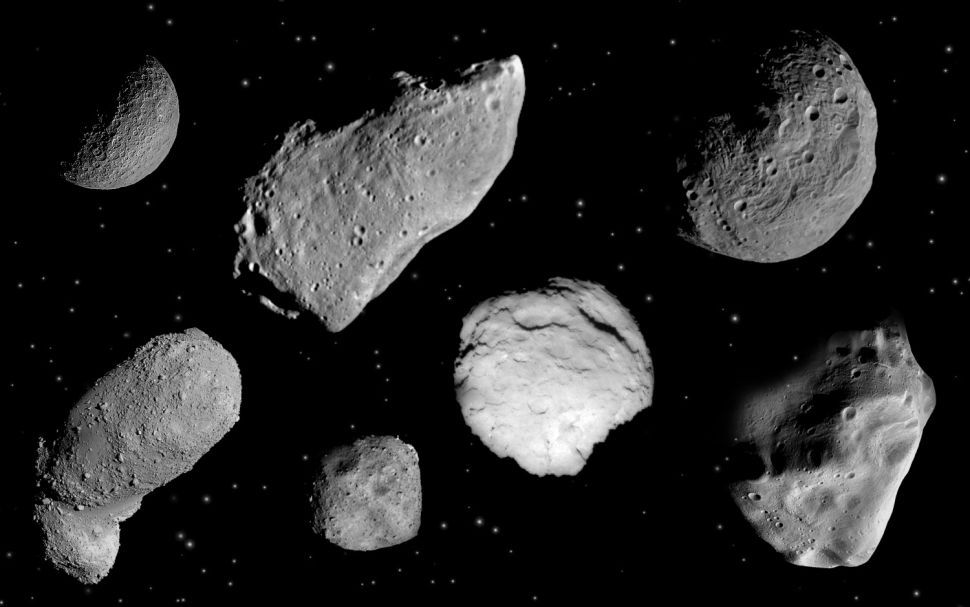
Asteroids are important building blocks of our solar system. When spacecraft study these small worlds, we learn more about how our neighborhood was formed — moons, planets and, of course, our own planet, Earth. A flurry of spacecraft have visited asteroids in recent decades to piece together the secrets of the solar system, and more such missions are launching soon.
Galileo is first to an asteroid!



NASA's Galileo spacecraft was the first to ever visit an asteroid and in fact flew by two space rocks. The mission launched on Oct. 18, 1989, from space shuttle Atlantis and arrived at Jupiter on Dec. 7, 1995, where Galileo spent eight years studying the largest planet in our solar system.
But before the probe reached Jupiter, it made several pit stops, including to the asteroids Gaspra and Ida.
Humanity's first encounter with an asteroid occurred on Oct. 29, 1991, when Galileo flew by the asteroid Gaspra. During the historic encounter, Galileo approached within 997 miles (1,604 kilometers) of Gaspra (an S-type or siliceous asteroid) and revealed that the space rock had mysterious flat areas that may be due to impacts. They may also be scars from when Gaspra broke off from its parent asteroid.
Then, on Aug. 28, 1993, Galileo made history again, this time by flying by the first asteroid known to have a moon: Ida. The probe's photos revealed that this asteroid and its moon, Dactyl, are truly strange objects; both experience space weathering that has caused their surfaces to turn red over time. After Galileo's asteroid adventures, it went on to Jupiter, but NASA hadn't finished with space rocks.
NEAR-Shoemaker lands on Eros




NASA's Near Earth Asteroid Rendezvous-Shoemaker (which was in part named after the planetary scientist Eugene Shoemaker) was designed to study the near-Earth asteroid Eros for about a year. The probe launched on Feb. 17, 1996, and made a landing on the asteroid on Feb. 12, 2001, where the mission ended. (NEAR-Shoemaker was not designed for a landing, so the successful touchdown provided bonus science.) Before going to Eros, this spacecraft made a flyby of the asteroid Mathilde.
The image of Mathilde (left) and Eros shows the two asteroids at the same scale as NEAR-Shoemaker imaged them, although Mathilde's brightness is exaggerated in this picture to make the asteroid easier to view. The two space rocks were both photographed from a distance of about 1,116 miles (1,800 km) on June 27, 1997, and Feb. 12, 2000, respectively. Mathilde is 35 miles (56 km) across, and Eros is 21 miles (33 km) across at its greatest extent.
Mathilde is located in the asteroid belt, between Mars and Jupiter, and has an orbital period of about 4.3 years. The asteroid has a slow rotation rate (17.4 days) and is made up of carbon-rich rock, making the object a C-type asteroid. NASA says the asteroid changed little since the solar system was formed 4.5 billion years ago.
NEAR flew by Eros on Dec. 23, 1998, and performed an orbital insertion on Feb. 14, 2000, orbiting for almost exactly a year, until its 2001 touchdown on Eros' surface. NEAR's views of Eros revealed it to be an S-type (siliceous) asteroid, meaning it consists mainly of stony materials and nickel iron. It is a part of the Amor groups of near-Earth asteroids (NEAs), which cross Mars' orbit. NASA says that NEAs like Eros are probably dead comets or the leftovers of collisions of small bodies in the asteroid belt.
Cassini's asteroid flyby en route to Saturn


The NASA and European Space Agency (ESA) Cassini mission lifted off from Earth in 1997 for an epic rendezvous with Saturn. Cassini orbited the planet and its moons between 2004 and 2017, making many remarkable discoveries — from learning that the icy moon Enceladus has plumes to imaging incredible methane and ethane lakes on the surface of Titan. (The spacecraft also released an ESA probe called Huygens, which landed on Titan and worked for a few hours there.)
While the mission is famous for its discoveries at Saturn, it also contributed to asteroid science by flying past asteroid Masursky in January 2000.
Masursky is about 6.8 miles (11 km) in diameter and is classified as an S-type asteroid. When Cassini flew by the asteroid from about 4 lunar distances (1 million miles, or 1.6 million km), the probe looked at the asteroid's composition and made an estimate of its diameter.
Deep Space 1 heads to deep space


Deep Space 1 was originally intended to test out ion engines, a form of spacecraft propulsion, but the mission was extended to fly by the asteroid Braille and Comet Borrelly. The spacecraft launched on Oct. 24, 1998, and flew by Braille on July 29, 1999. Its star tracker failed en route to Borrelly, but engineers still managed to keep on the trajectory and flew by the comet successfully in September 2001.
Asteroid Braille has a few interesting characteristics. The object has an inclined orbit compared to the rest of the solar system, meaning that it is tilted with respect to most of the other worlds. It also belongs to a Mars orbit-crossing asteroid group. Braille rotates once every 9.5 days and is about 1 to 2 km (0.62 to 1.2 miles) in diameter.
Deep Space 1 took pictures in visual and infrared wavelengths; it passed within just 14 miles (26 km) of Braille, but because of a problem with the tracking system, the pictures were taken from thousands of miles away.
Catching Stardust


NASA's Stardust mission is most famous for collecting the first sample from a comet and returning it to Earth. The spacecraft launched on Feb. 7, 1999, and flew by asteroid Annefrank on Nov. 2, 2002, before the most famous part of its mission.
Annefrank is an S-type asteroid that is roughly 2.8 miles (4.5 km) in diameter. Pictures from Stardust showed several impact craters and also suggested that Annefrank may be a loosely linked set of two asteroids, also known as a contact binary. Since Stardust flew by Annefrank, which was named after the famous diary author who was killed in the Holocaust, other observatories have tried to narrow down the asteroid's rotation.
The Stardust mission is best known for flying by Comet Wild 2 in 2004, picking up comet and interstellar dust. The samples returned to Earth in their own capsule in 2006, while Stardust was repurposed for a new mission called Stardust-NExT. The probe flew by Comet Tempel 1 on Feb. 14, 2011.
Japan's Hayabusa sampling mission



Hayabusa (aka, MUSES-C) was a Japanese spacecraft designed to return samples from the near-Earth asteroid Itokawa. It launched on May 9, 2003, and successfully met up with Itokawa in September 2005. The spacecraft endured multiple malfunctions during the mission but managed to finish most of its major objectives. The spacecraft's samples returned to Earth on June 13, 2010, but it took time for scientists to open its container and check for samples. Hayabusa mission scientists confirmed in November 2010 that Hayabusa indeed picked up samples of Itokawa.
Itokawa is a potentially hazardous asteroid that periodically crosses Earth's orbit; that's one of the reasons this asteroid was chosen for close-up study. It's about 1,150 feet (350 meters) in diameter and is classified as an S-type asteroid. Images from the spacecraft showed few impact craters, although a "rubble pile" appears on the surface.
Europe's Rosetta comet mission flies by asteroids



The European Space Agency's Rosetta spacecraft was a popular mission that successfully made its way to a comet and landed a probe, called Philae, on the object's surface. Rosetta launched on March 2, 2004, and made two asteroid flybys before its last destination: Steins (September 2008) and Lutetia (July 2010).
When Rosetta reached Steins, the probe discovered that the object is a rare E-type (enstatite) asteroid, meaning that it has iron-poor silicates on its surface. The asteroid is roughly 4.1 miles (6.6 km) at its longest dimension and is likely part of a larger object that broke apart. Rosetta spotted impact craters on Steins' surface, and the space rock's measurements suggest that the interior consists of rubble. The asteroid will likely disintegrate due to its delicate interior.
Lutetia is another crater-pocked asteroid. Rosetta found that the asteroid is about 80 miles (130 km) at its longest dimension. Its composition is a little unclear, with characteristics of both C-type and M-type asteroids. The European Space Agency described the asteroid as "most probably a primitive survivor from the violent birth of the solar system."
Rosetta successfully reached Comet 67P/Churyumov-Gerasimenko on Aug. 6, 2014. The probe released Philae a few weeks afterward; the lander bounced on the surface before settling in a shady spot. Philae quickly ran down its batteries but still performed some science before losing power. Rosetta landed on the comet on Sept. 30, 2016, to end its mission.
NASA's Dawn rises






NASA's Dawn mission launched on Sept. 27, 2007, to investigate two large members of the asteroid belt: Ceres (a dwarf planet) and 4 Vesta (an asteroid). First, the spacecraft came to Vesta, orbiting the asteroid between July 2011 and December 2012. Dawn's next and final destination was Ceres, where it entered orbit on March 6, 2015. (NASA also considered sending Dawn to visit a third target but ultimately turned down the idea.) The mission ended in late 2018, when the probe's hydrazine fuel will run out.
While Dawn orbited Vesta, it confirmed that the asteroid is the source of a major group of meteorites that reach Earth during a massive impact. The world, which is the brightest asteroid as seen from Earth, is the second largest object in the asteroid belt after Ceres.
Dawn arrived at Ceres on March 6, 2015. Ceres is a large, spherical object that is classified as a dwarf planet. Its radius is roughly 296 miles (476 km), which is small as solar system worlds go but large in terms of asteroids. Ceres is actually the largest member of the asteroid belt. It rotates around its axis once every nine hours. Scientists have spotted water vapor appearing periodically above Ceres, possibly from ice escaping from the dwarf planet's surface after impacts.
Japan's lost Procyon
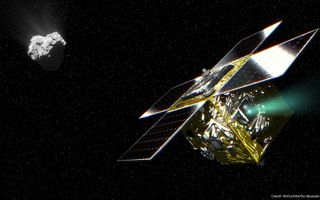
Japan's Procyon, also known as Proximate Object Close flyby with Optical Navigation, launched with Hayabusa2 on Dec. 4, 2014. In 2016, the probe was supposed to fly by asteroid 2000 DP107, but a problem with the ion-thruster system on Procyon forced the Japan Aerospace Exploration Agency to abandon the mission. Procyon did, however, catch a glimpse of Comet 67P, the destination of the Rosetta mission.
New Horizons explores Kuiper Belt object Arrokoth





NASA's New Horizons mission was designed to fly past Pluto, which it did in 2015. Because the spacecraft was in fine shape, mission personnel evaluated other destinations that the probe had fuel to reach and decided to fly past an object then known only as 2014 MU69, which had been discovered after the spacecraft launched.
New Horizons' flyby determined that this Kuiper Belt object, now officially called Arrokoth, was a contact binary, formed when two space rocks glide gently into each other.
Hello, Hayabusa2









The Japanese Hayabusa2 spacecraft, a successor to Hayabusa, returned samples back to Earth. Hayabusa2 launched on Dec. 2, 2014, arrived at Ryugu on June 27, 2018, and delivered its cargo in December 2020.
Asteroid Ryugu is a potentially hazardous near-Earth object. It has qualities of both a C-type asteroid and a G-type (rare carbonaceous) asteroid. It takes about 16 months to orbit the sun and is named after a magical underwater palace from Japanese folk stories.
During its visit, the Hayabusa2 spacecraft deployed a series of smaller robots that touched down on the asteroid's surface to give scientists another perspective of the rocky world. It also shot Ryugu in order to create an artificial crater, giving scientists a glimpse inside the asteroid. And Hayabusa2 took samples both from Ryugu's surface and from the fresh crater to allow scientists on Earth to compare the locations.
After Hayabusa2 deployed its sample capsule through Earth's atmosphere in December 2020, the mission team decided to send the spacecraft to explore a second asteroid. Hayabusa2 will arrive at a fast-spinning asteroid currently known only as 1998 KY26 in July 2031. Along the way, it will fly past an asteroid dubbed 2001 CC21 in 2026 in a maneuver necessary to reach the spacecraft's final target, but the team hopes to gather data along the way as well.
NASA samples with OSIRIS-REx





NASA's OSIRIS-Rex (Origins, Spectral Interpretation, Resource Identification, Security, Regolith Explorer) launched on Sept. 8, 2016, en route to Bennu, a C-type asteroid. The spacecraft arrived at Bennu in August 2018 and spent nearly two years studying the asteroid from orbit.
On Oct. 20, 2020, the OSIRIS-REx spacecraft conducted the key maneuver of its mission, capturing a sample of the rocky world to bring back to Earth. The spacecraft left Bennu in May 2021 and is scheduled to deliver its cargo in September 2023.
Lucy in the sky with diamonds


While most asteroid missions have focused on near-Earth and main-belt asteroids, NASA's Lucy mission takes a different approach to the rubble of the solar system. Lucy will fly past one main-belt asteroid, but the mission is dedicated to the Trojan asteroids that orbit the sun ahead of and behind Jupiter.
There are more than 10,000 such rocks, and no mission has ever studied them up close. Within 12 years of its October 2021 launch, Lucy will fly past seven different Trojans, giving scientists a taste for the variety these objects come in.
NASA hits an asteroid with a DART


NASA's Double Asteroid Redirection Test (DART) will be a new kind of asteroid mission for the agency. Instead of focusing on detailed science observations, DART is a planetary defense mission dedicated to giving scientists their first real-world data about how they might be able to deflect an asteroid headed for Earth.
In late 2022, DART will arrive at an asteroid called Didymos, release a cubesat to record the scene, then slam into Didymos' moon, Dimorphos. Scientists will watch from Earth to see how much the impact tweaks the moon's orbit around the larger asteroid.
Later this decade, a European Space Agency mission called Hera will head out to Didymos as well to study the asteroid and crater after the dust has settled.
Psyche, a metallic world to explore


In 2022, NASA will launch the Psyche mission to visit an asteroid also called Psyche. The world is strangely metallic for an asteroid, leaving scientists with a puzzle — and a hope that the body may turn out to be bare core of a planet that lost its rock. The spacecraft will launch in 2022 and arrive at its target in 2026, then spend 21 months orbiting Psyche.
Join our Space Forums to keep talking space on the latest missions, night sky and more! And if you have a news tip, correction or comment, let us know at: community@space.com.
Get the Space.com Newsletter
Breaking space news, the latest updates on rocket launches, skywatching events and more!

Elizabeth Howell (she/her), Ph.D., was a staff writer in the spaceflight channel between 2022 and 2024 specializing in Canadian space news. She was contributing writer for Space.com for 10 years from 2012 to 2024. Elizabeth's reporting includes multiple exclusives with the White House, leading world coverage about a lost-and-found space tomato on the International Space Station, witnessing five human spaceflight launches on two continents, flying parabolic, working inside a spacesuit, and participating in a simulated Mars mission. Her latest book, "Why Am I Taller?" (ECW Press, 2022) is co-written with astronaut Dave Williams.



